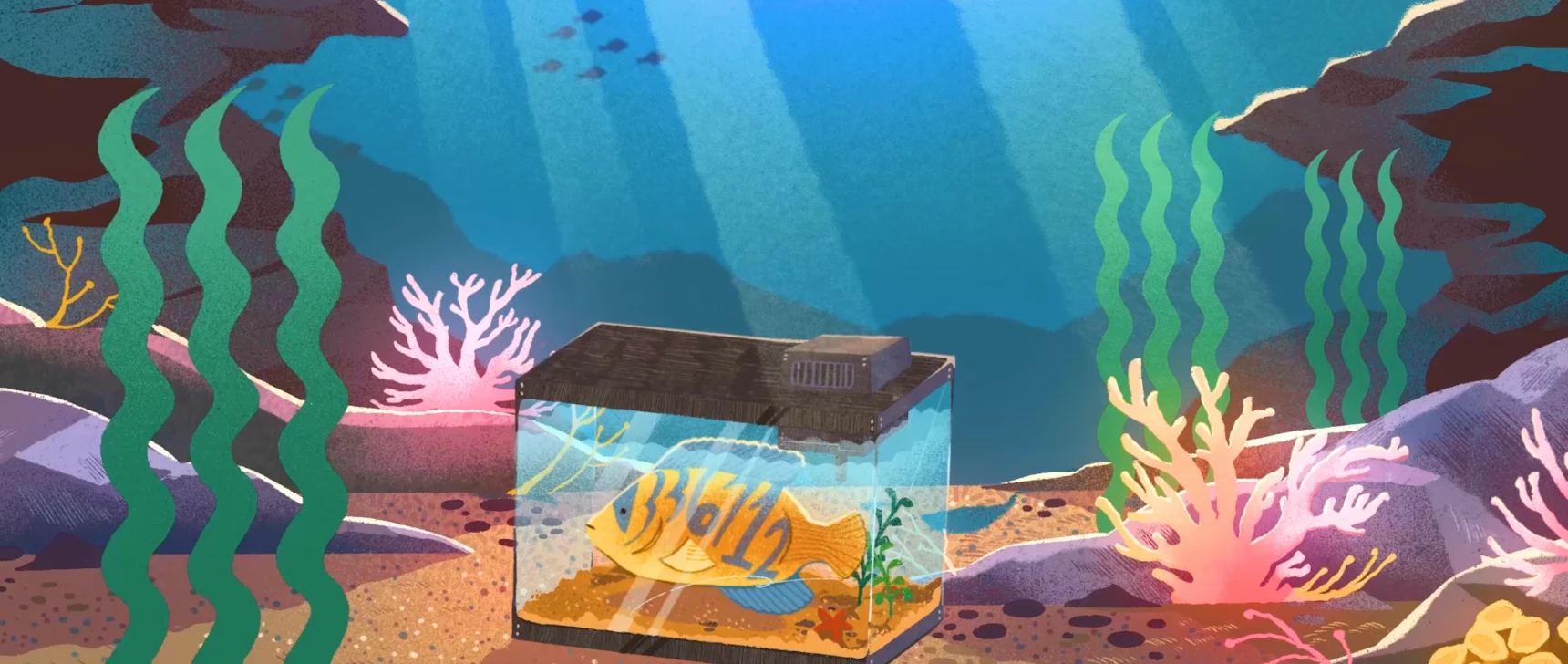Quasicrystals Spill Secrets of Their Formation
Introduction
Since their discovery in 1982, exotic materials known as quasicrystals have bedeviled physicists and chemists. Their atoms arrange themselves into chains of pentagons, decagons and other shapes to form patterns that never quite repeat. These patterns seem to defy physical laws and intuition. How can atoms possibly “know” how to form elaborate nonrepeating arrangements without an advanced understanding of mathematics?
“Quasicrystals are one of those things that as a materials scientist, when you first learn about them, you’re like, ‘That’s crazy,’” said Wenhao Sun, a materials scientist at the University of Michigan.
Recently, though, a spate of results has peeled back some of their secrets. In one study, Sun and collaborators adapted a method for studying crystals to determine that at least some quasicrystals are thermodynamically stable — their atoms won’t settle into a lower-energy arrangement. This finding helps explain how and why quasicrystals form. A second study has yielded a new way to engineer quasicrystals and observe them in the process of forming. And a third research group has logged previously unknown properties of these unusual materials.
Historically, quasicrystals have been challenging to create and characterize.
“There’s no doubt that they have interesting properties,” said Sharon Glotzer, a computational physicist who is also based at the University of Michigan but was not involved with this work. “But being able to make them in bulk, to scale them up, at an industrial level — [that] hasn’t felt possible, but I think that this will start to show us how to do it reproducibly.”
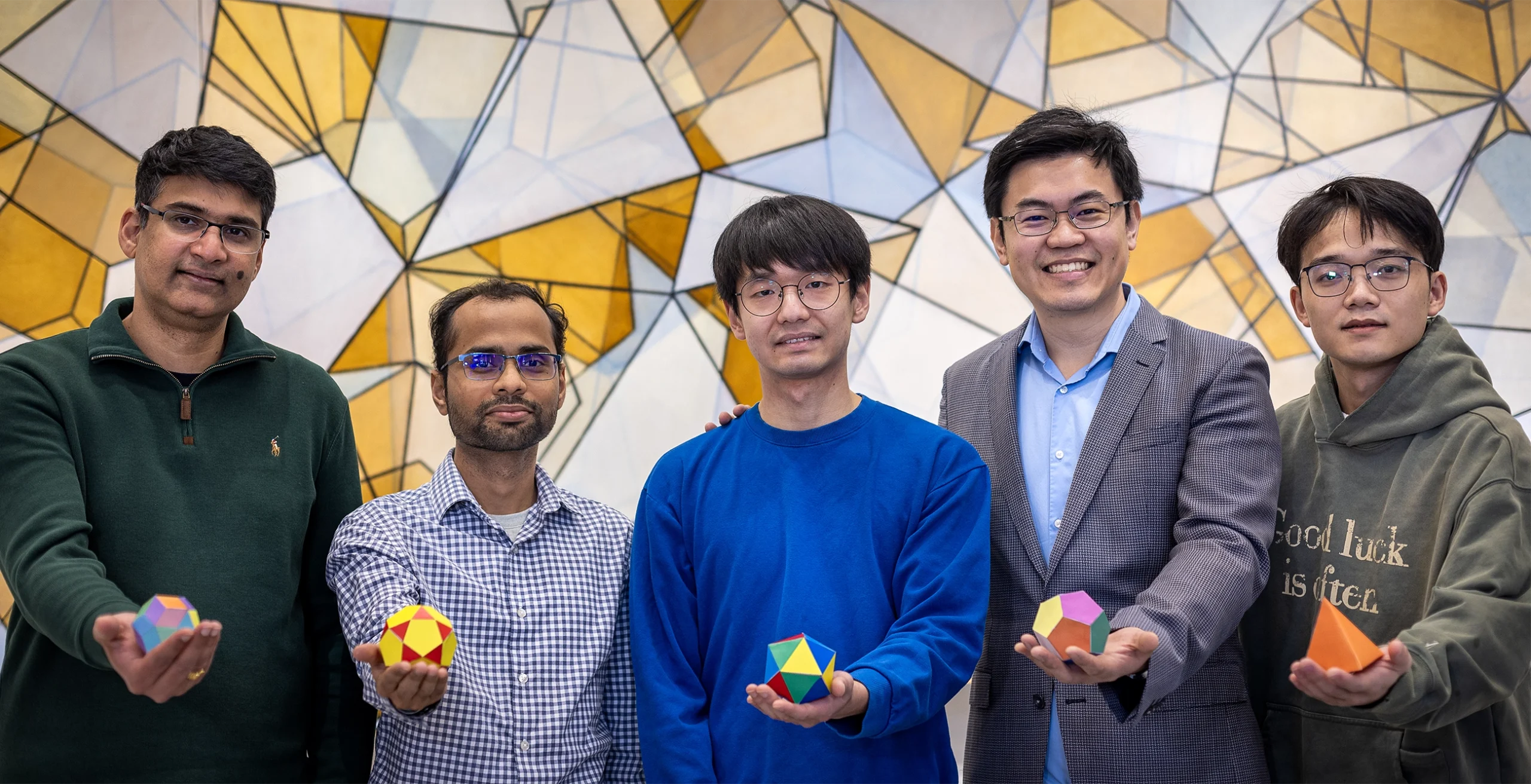
From left: Vikram Gavini, Sambit Das, Woohyeon Baek, Wenhao Sun and Shibo Tan hold examples of geometric shapes that appear in quasicrystals. The University of Michigan researchers have shown that at least some quasicrystals are thermodynamically stable.
Marcin Szczepanski Michigan Engineering
‘Forbidden’ Symmetries
Nearly a decade before the Israeli physicist Dan Shechtman discovered the first examples of quasicrystals in the lab, the British mathematical physicist Roger Penrose thought up the “quasiperiodic” — almost but not quite repeating — patterns that would manifest in these materials.
Penrose developed sets of tiles that could cover an infinite plane with no gaps or overlaps, in patterns that do not, and cannot, repeat. Unlike tessellations made of triangles, rectangles and hexagons — shapes that are symmetric across two, three, four or six axes, and which tile space in periodic patterns — Penrose tilings have “forbidden” fivefold symmetry. The tiles form pentagonal arrangements, yet pentagons can’t fit snugly side by side to tile the plane. So, whereas the tiles align along five axes and tessellate endlessly, different sections of the pattern only look similar; exact repetition is impossible. Penrose’s quasiperiodic tilings made the cover of Scientific American in 1977, five years before they made the jump from pure mathematics to the real world.
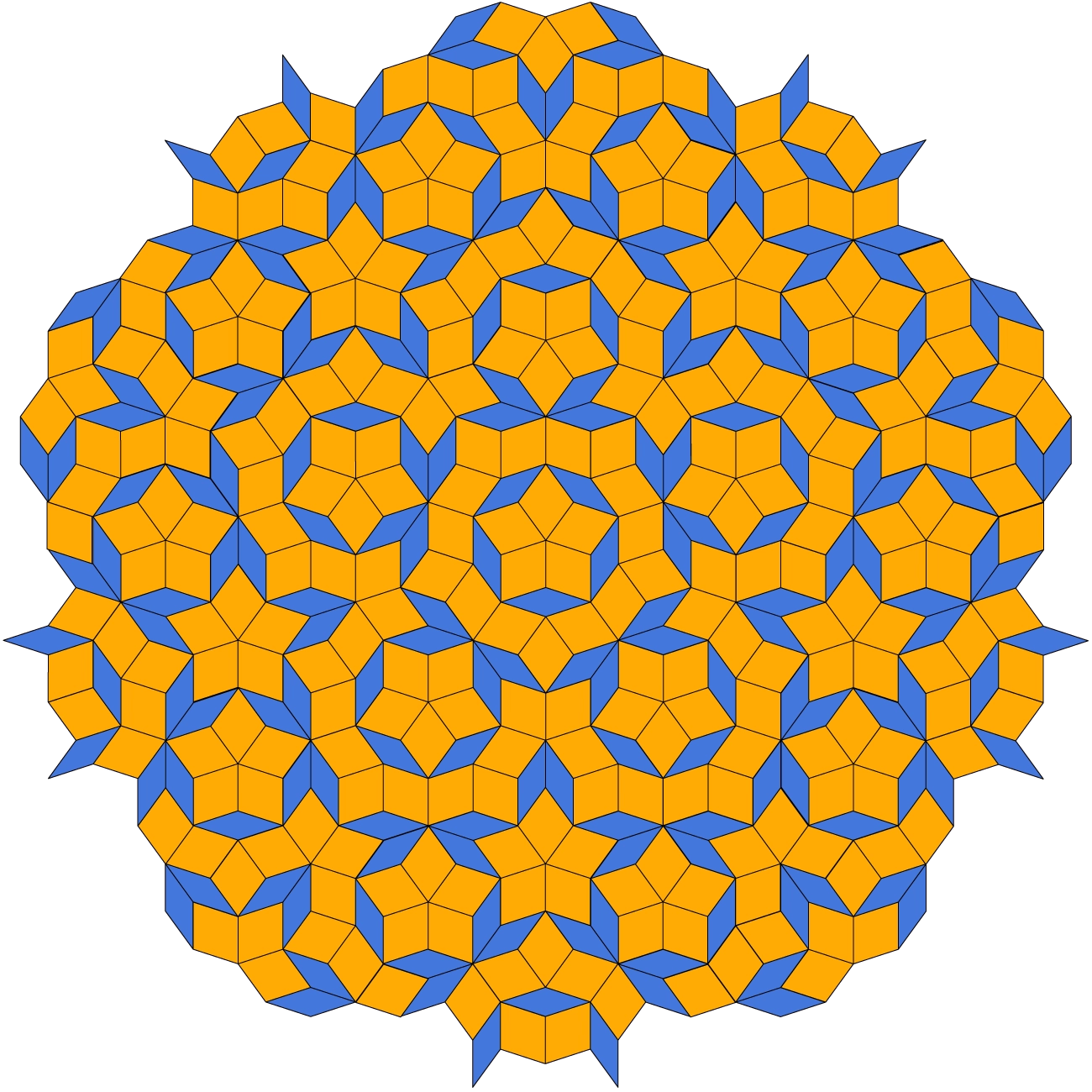
In Penrose tilings, tiles of two or more shapes form nonrepeating patterns that exhibit fivefold symmetry.
Inductiveload via Wikimedia Commons
In 1982, Shechtman found quasiperiodic atomic structures with fivefold symmetry in lab-created metal alloys — something that most materials scientists had dismissed as impossible. The physicists Paul Steinhardt and Dov Levine gave the name “quasicrystals” to this new class of materials and classified their allowed symmetries. Steinhardt later discovered naturally occurring examples of quasicrystals.
By the time Shechtman won the 2011 Nobel Prize in Chemistry for his discovery, hundreds of researchers around the world were trying to explain these impossible-seeming structures and find uses for them.
Though fascinating to physicists, quasicrystals have so far found few applications. They exist in an in-between realm — they’re not as ordered as crystals, not as unstructured as glass, and less malleable than the metals they’re made from. Their ever-varying structure makes it tough to definitively pin down their properties.
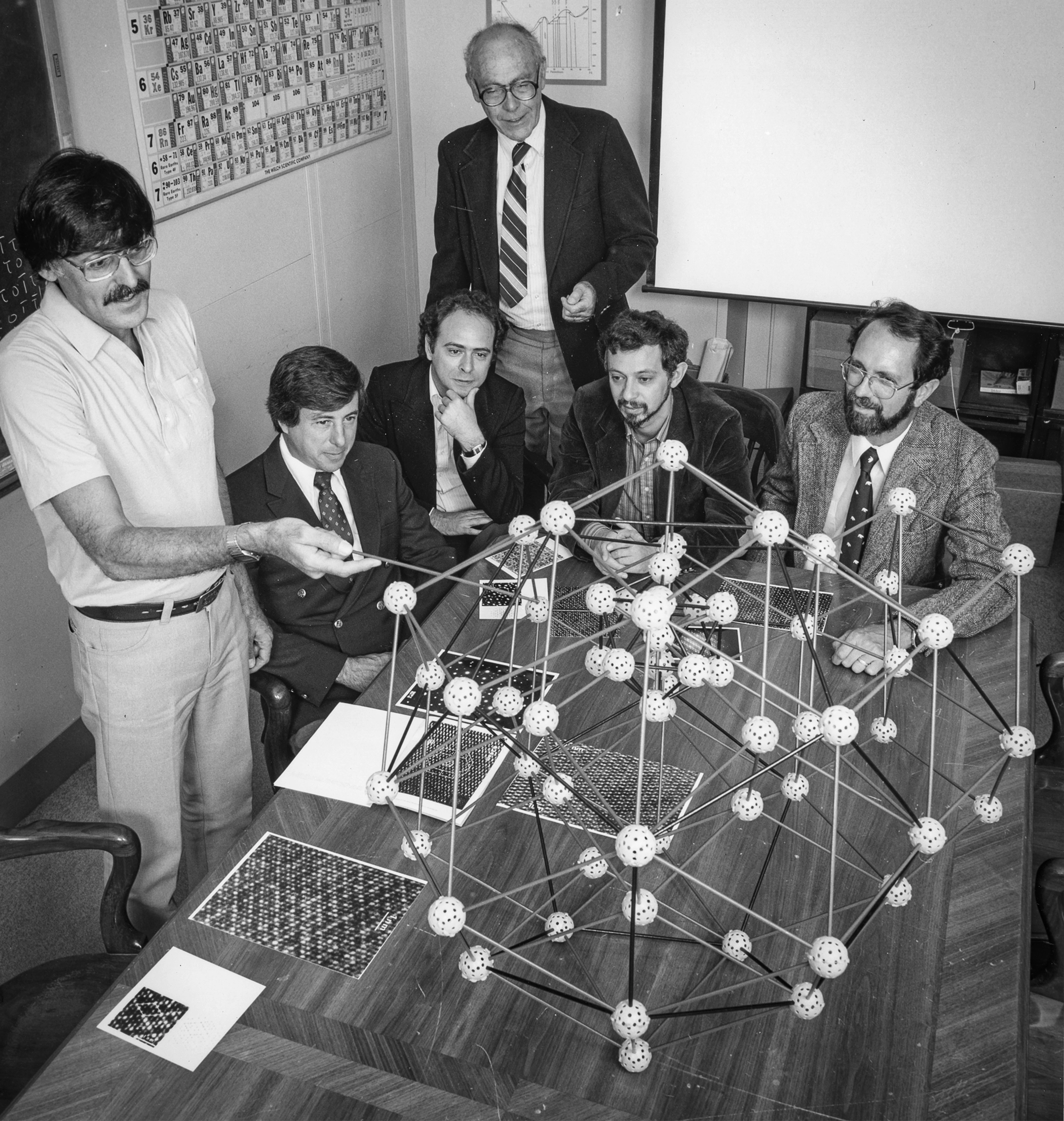
Dan Shechtman (left), who accidentally discovered quasicrystals in 1982, is shown discussing the surprising atomic structure of these materials with his colleagues at the U.S. National Bureau of Standards (now the National Institute of Standards and Technology) in Maryland.
Phillip Westcott, National-Institute of Standards and Technology via Wikimedia Commons
Some applications have been identified. Because they are generally poor conductors of heat and electricity and are relatively durable and nonreactive, they’re potentially useful for nonstick cookware coatings, and for reinforcing steel in medical devices and razors. There have also been attempts to employ their unique patterns to create atomic anti-fraud tags for works of art. Large-scale use, though, has been hampered by how inherently difficult quasicrystals are to understand.
Whereas Penrose tiles provide an illuminating mathematical description, they say nothing about the mechanism by which atoms self-order into these patterns. With quasiperiodicity, one atom’s position determines those of others in distant parts of the material, even though these atoms don’t directly interact. How do they do it?
Old Method, New Use
Endeavoring to find out, Sun and his colleagues studied two types of quasicrystals, both of them metal alloys whose atoms arrange themselves into 30-sided, three-dimensional shapes known as rhombic triacontahedrons. Like pentagons, these can’t sit snugly side by side. The shapes therefore take on quasiperiodic patterns.
X-ray diffraction measurements had revealed the atomic structure of the quasicrystals. The researchers applied a technique called density functional theory (DFT) to this data.
DFT involves measuring the states of electrons or other quantum particles within a material and using that information to predict the material’s properties, like hardness and stability.
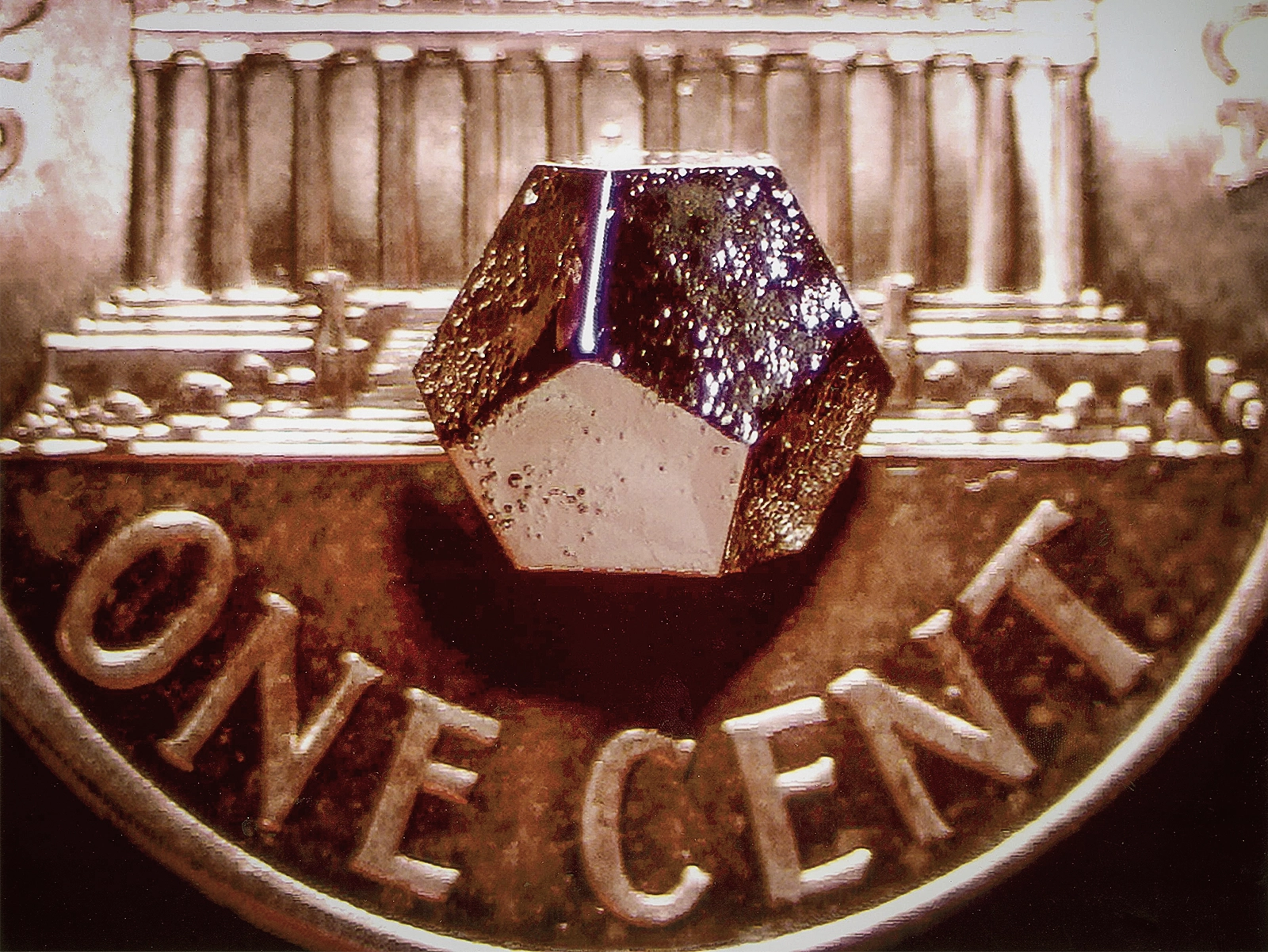
The dodecahedral shape of this holmium-magnesium-zinc quasicrystal reflects the “forbidden” fivefold symmetry of its atomic structure.
Ames National Laboratory
The complexity of DFT calculations grows exponentially with the number of particles. This limitation is manageable in conventional crystals because their repeating atomic structures mean that a small “unit cell” section can provide representative information about the whole. But in quasicrystals, what’s true in one region of the sample might not be true elsewhere.
To apply DFT, the researchers considered randomly selected chunks of their larger quasicrystals, a process they call “nanoscooping.” Their smallest scoop contained 24 atoms, their largest 740. Even at these limited sizes, “these were the most expensive DFT calculations of solids of all time,” Sun said — the first such calculation to use “exascale computing,” involving more than a billion billion operations per second.
They calculated the surface and bulk energies of their samples: how much energy atoms require to maintain their bonds, both at the surface and in the interior. Because surface atoms have bonds only on one side, surface energy is always higher than bulk energy. The difference between surface and bulk energies, as well as their combined totals, varies from material to material, affecting how easily these atomic structures nucleate and grow. Until this study, quasicrystals had eluded these types of computations. But the different-size scoops allowed the team to model the progression of energies from smaller to larger, extrapolating from there to the quasicrystal as a whole.
The elements that make up the compounds in a quasicrystal can also be combined into other forms, including many known stable crystalline materials. Plotting the combined surface and bulk energies of various stable compounds forms a shape — an abstract zone of stability for materials made from those elements. Sun and his colleagues found that the energies they calculated with this new DFT approach did indeed fall on the shape.
“We showed in the paper that quasicrystals are, in fact, stable, which I think would be surprising to a lot of people,” Sun said.
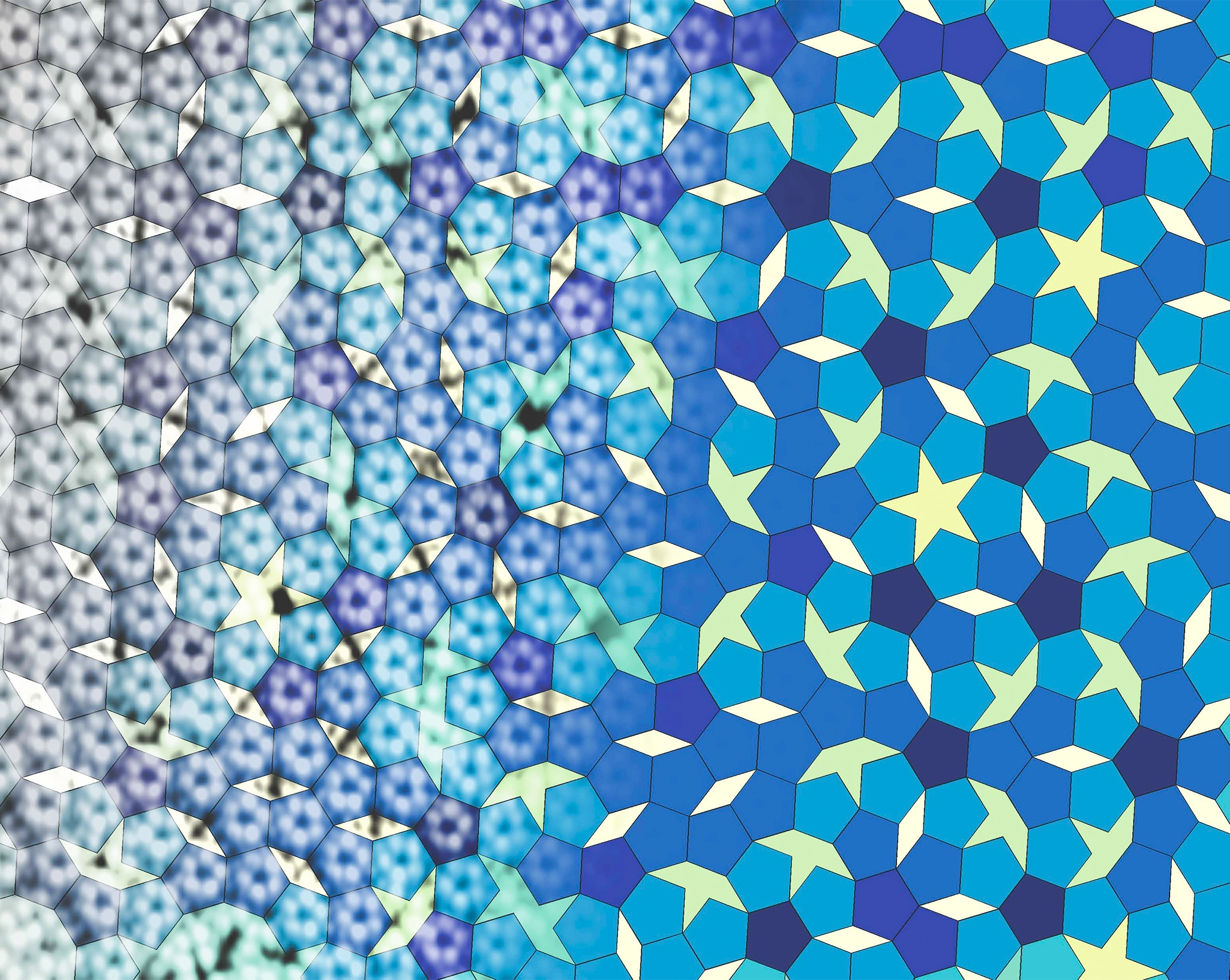
A scanning tunneling microscope image of a quasicrystal consisting of ferrocenecarboxylic acid molecules is overlaid by a Penrose tiling.
S. Alex Kandel
“That’s just freaking awesome. It’s a really clever thing,” Glotzer said. “Until now, no one has ever successfully tried to do DFT calculations on something that wasn’t periodic.”
Michael Widom, a physicist at Carnegie Mellon University, said the stability result might help explain how quasicrystals form in the first place. “It answers a fundamental question. If you’re confronted with the existence of something, you would like to know, ‘Why does it exist?’” he said. “It satisfies intellectual curiosity.”
Materials naturally tend toward lower-energy states. The overall energy depends on how closely atoms are packed together, as well as the shapes of their bonds. In the quasicrystals that the Michigan team studied, the rhombic triacontahedrons forced quasiperiodic patterns and appeared to require relatively little energy.
“We haven’t proven this conclusively, but my interpretation is that the triacontahedrons, these building blocks of quasicrystals, are a very happy shape,” Sun said. “By happy, I mean a low-energy, stable-shaped building block.”
Dynabead Quasicrystals
A recently published experiment co-led by Brennan Sprinkle, an applied mathematician at the Colorado School of Mines, was designed to guide particles to that happy place.
Atoms are so tiny that physicists can’t easily observe or control their assembly into quasicrystals. So Sprinkle and his collaborators developed a new, comparatively simple fabrication method: They grew quasicrystals out of commercially sold particles called Dynabeads. At micrometers across — 10,000 times larger than individual atoms — Dynabeads are vastly more easily controlled and observed. Using magnetic and electrical fields, the researchers induced quasiperiodic structures to “just fold out from some nucleation point like a three-dimensional snowflake,” Sprinkle said.
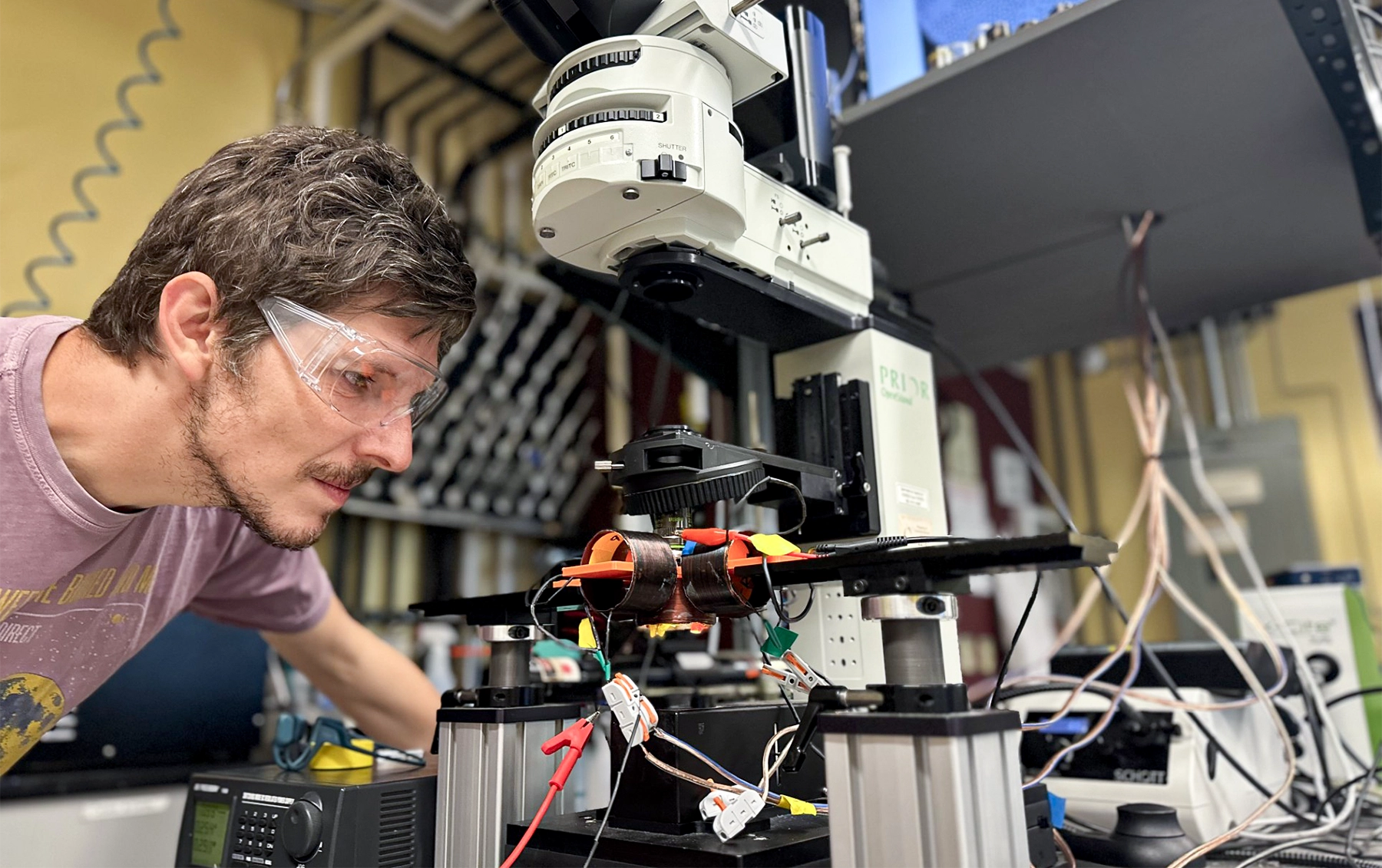
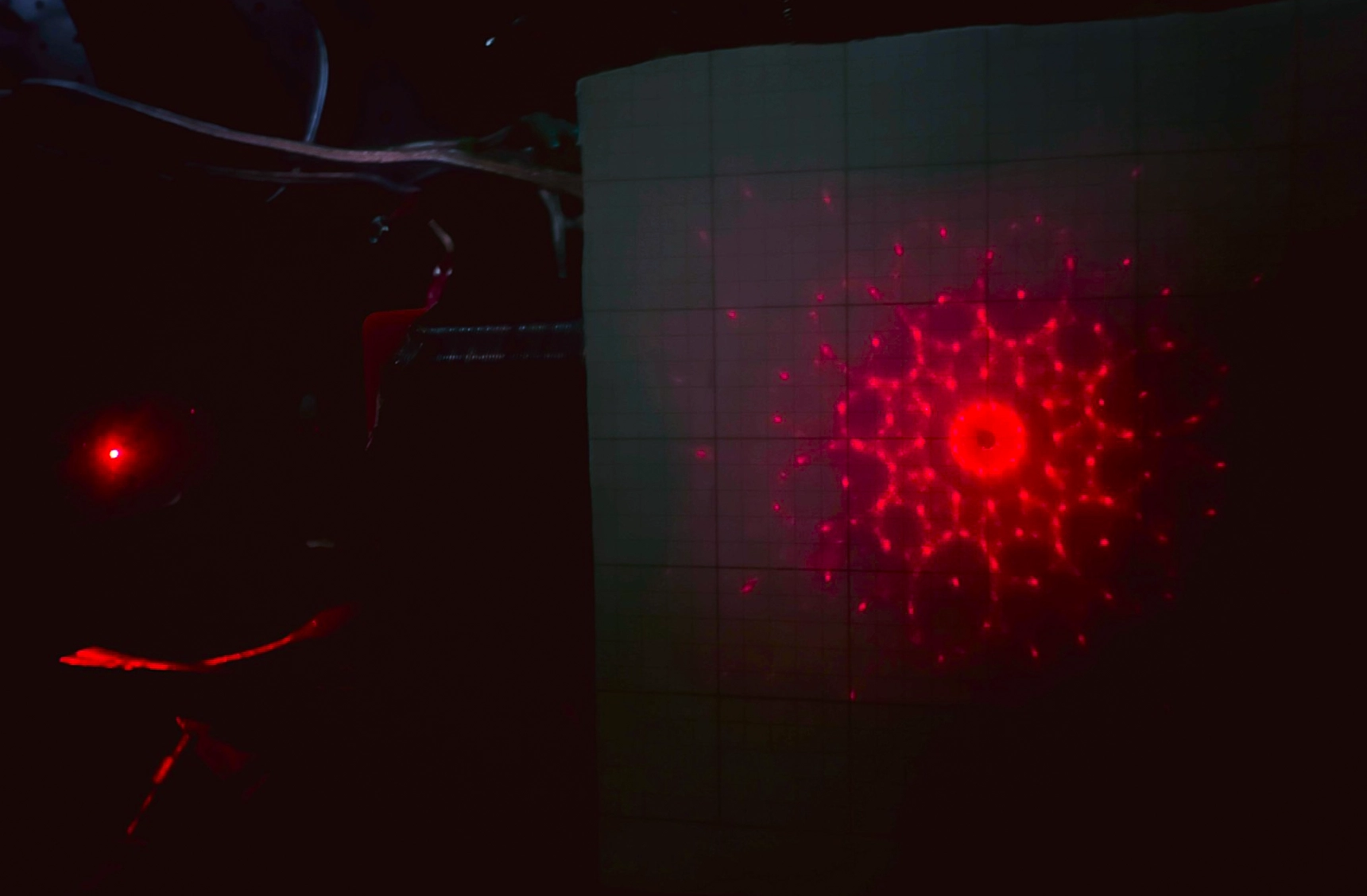
Brennan Sprinkle and colleagues at the Colorado School of Mines recently induced microspheres called Dynabeads to assemble into a quasicrystal. The diffraction pattern created from hitting the Dynabead quasicrystal with a laser reveals the twelvefold symmetry of its atomic structure.
Fangrong Zou (left); Courtesy of Brennan Sprinkle
Other researchers see practical potential in this advance.
“This work provides the first live, optical-scale system for studying quasicrystal formation in real time — a genuine advance,” said Chad Mirkin, a chemist at Northwestern University. “It is not yet clear the mechanistic insights will generalize to other quasicrystal systems, but in terms of synthesis and application, it is a strong, creative step forward.”
As researchers gain insight into how quasicrystals form, they’re also continuing to uncover unexpected properties. A team of Japanese researchers recently reported the first-ever observation of antiferromagnetism in quasicrystals. This phenomenon, in which particles’ magnetic moments point in alternating directions, was previously viewed as too regular to manifest in the nonrepeating structure of quasicrystals.
These advances in synthesis and characterization make it possible to contemplate applications, invigorating a research community that was already driven by a kind of joyous curiosity.
“I think that there is so much exciting work being done on quasicrystals because they have interesting properties when studied from any angle: from the mathematics of aperiodic tilings, the physics of superconductivity, the chemistry of alloys that form quasicrystals,” Sprinkle said. “There’s a sort of web of interest here so that mathematicians, physicists, chemists and even artists can be working together to understand and expand all the amazing properties that quasicrystals have.”
Sun finds quasicrystals as crazy now as when he first learned about them. “They’re like the platypus of materials,” he said. “They have aspects of crystals; they have aspects of amorphous materials. Is the platypus a better animal than any other? Not really, but it’s fascinating, this mammal that lays eggs.”



